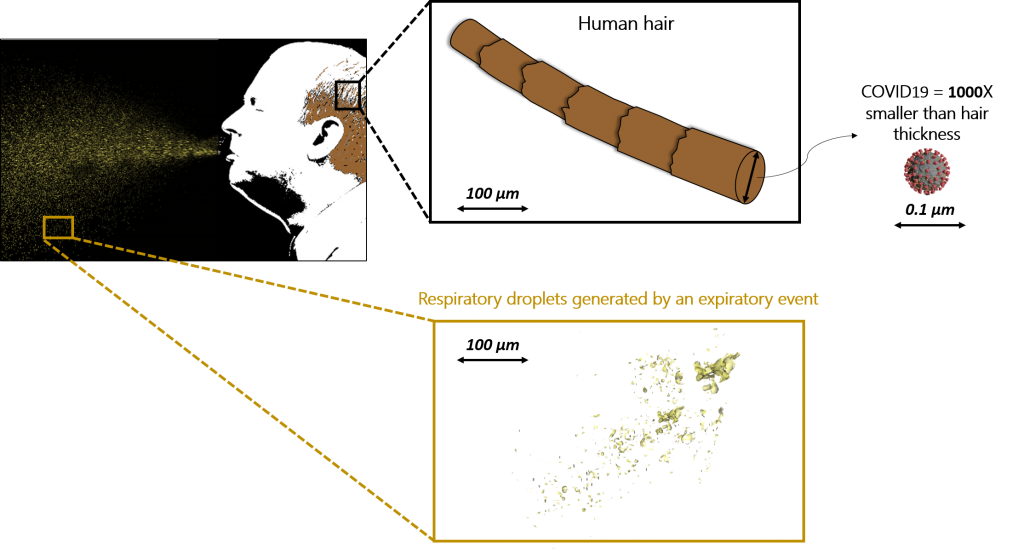Respiratory viruses, like the coronavirus, spread between humans via direct contact, respiratory droplets and fine-particle aerosols (see figure below). Since the outbreak of the COVID-19 pandemic, demand and prices for personal protective equipment, such as medical face masks, has been up to 100 and 20 times higher than normal, respectively. Shortages of medical masks has contributed to the high rate of infection among healthcare workers. According to new guidelines from several health organization, the use of (homemade) textile face masks is recommended to slow the spread of the COVID-19. Currently, however, guidelines are still limited regarding the textiles to use (for the envelope), and the best suited filter material to be used in these types of masks.

In order to provide the population with consistent and science-based advice on preferred materials (for the textile envelope and the filter material) for community and artisanal textile face masks, we are characterizing the microstructure of different materials using X-ray microfocus computed tomography (microCT), and we use these datasets to simulate the pressure drop (i.e. measure for breathability). We validate our measurements with physically measured filter efficiency and pressure drop, and in this way, we try to develop a “virtual testing platform” for the characterization of the filter efficiency and pressure drop of potential filter and mask materials.